Chasing Canton Series: Future Hall of Fame RBs and the Case for Lorenzo Neal
Jeremy Bissett Part Two: HOF Eligible, Active RBs, and a Case for Lorenzo Neal.
In Part One of this series, we spotlighted the legends—the Hall of Fame running backs whose busts and stories set the bar for greatness, ranked by their Hall of Fame Monitor score. Now, in Part Two, the chase continues with a new group in the waiting room. Some, like Marshawn Lynch, are officially eligible as of this year (2025), while others—Frank Gore, LeSean McCoy, and Adrian Peterson—are only a year or two away from their names entering the ballot. Roger Craig has been left waiting for decades, his groundbreaking career still somehow overlooked. And then there’s Lorenzo Neal, the selfless fullback whose blocking opened doors for so many of these legends but rarely gets mentioned in Canton conversations.
But the story doesn’t stop there. Today’s active backs—Derrick Henry, Christian McCaffrey, Alvin Kamara, Saquon Barkley, Josh Jacobs—are writing their own Hall of Fame cases in real time, each chasing milestones and moments that might one day earn them a bronze bust of their own.
Let’s dig into the runners—and the rare lead blocker—who are next up in the chase for Canton.
🏈🏈🏈🏈🏈🏈🏈🏈🏈🏈🏈🏈🏈🏈
Not In Yet—But They Fit the Mold
Switching our attention to the next group of running backs on the cusp of Hall of Fame induction, these players aren’t just impressive—they’re reshaping what it means to earn a spot in Canton in today’s NFL. Their stats and highlight reels stand shoulder-to-shoulder with the legends we’ve already covered, but what truly sets them apart is a combination of durability, innovation, and influence that extends far beyond the football field.
Names like Adrian Peterson, Frank Gore, LeSean McCoy, Roger Craig, and Marshawn Lynch have already become part of football’s rich history. As their eligibility windows open, the conversation has shifted from “if” they’ll make it into the Hall of Fame to “when.” Each has left a unique mark on the game, whether it’s Peterson’s sheer power and comeback story, Gore’s remarkable longevity, McCoy’s elusive playmaking, Craig’s continuing the evolution of dual-threat style, or Lynch’s fierce running and cultural impact.
And while we’re talking about game-changers, we will also make a strong case for Lorenzo Neal—the most dominant lead blocker the NFL has ever seen. His impact may not always show up on stat sheets, but every great running back he paved the way for owes a debt to his relentless, bruising style in the trenches.
Adrian Peterson: Relentless Comeback (HOFm 125.67)
Adrian Peterson holds the highest Hall of Fame Monitor score among running backs not yet inducted, standing at the forefront of the next wave of potential Canton entrants. A true force of nature, Peterson’s jaw-dropping stats and sustained excellence leave little doubt about his eventual Hall of Fame destiny. Eligible for induction in 2027, five years after his last NFL snap in 2021, Peterson finished his career with 14,918 rushing yards—ranking fifth all-time—and 120 touchdowns. His seven Pro Bowls and four First-Team All-Pro selections only scratch the surface of his impact.
Peterson’s 2012 MVP season remains one of the most remarkable in NFL history. Just months after tearing his ACL, he surged back to rush for 2,097 yards, displaying a level of resilience and willpower rarely seen in the sport. Few running backs have inspired as much awe or changed the trajectory of games through sheer determination.
Off the field, Peterson’s legacy is more complex. Once praised as a “good guy” in the league, his 2014 legal troubles related to child discipline practices resulted in probation, fines, and community service. While he has fulfilled those obligations and expressed regret, this aspect of his story adds nuance to his overall legacy—something Hall of Fame voters will have to balance alongside his undeniable on-field greatness.
Frank Gore: The Iron Man (HOFm 100.05)
Frank Gore’s journey to NFL greatness was defined by resilience from the very start. While playing for the Miami Hurricanes, Gore suffered two devastating ACL tears—one in 2001 and another in 2003—that could have ended his career before it began. Despite these grueling injuries, he battled back with determination and grit, eventually launching a professional career marked by extraordinary longevity and consistency.
Gore, eligible for the Hall of Fame in 2026, is a marathon runner in a league of sprinters. Over 16 NFL seasons, he started 241 games, while amassing 16,000 rushing yards, ranking third all-time, and scored 81 rushing touchdowns. He carried the ball 3,735 times with an impressive 4.3-yard average and added 484 receptions for nearly 4,000 yards and 18 receiving touchdowns. Known as a reliable workhorse, Gore earned five Pro Bowl selections and stepped into the role of a locker room leader and mentor throughout his career.
His career stats and durability made him a dependable bell cow for several teams, including the San Francisco 49ers and Indianapolis Colts. Gore’s ability to keep performing at a high level season after season, especially after overcoming such serious injuries in college, is a testament to his professionalism, preparation, and heart. His longevity and steady production have firmly placed him among the NFL’s all-time greats, making his induction into Canton not just likely but well deserved.
LeSean McCoy: The Real Shady (HOFm 82.84)
LeSean “Shady” McCoy, eligible for the Hall of Fame in 2026, lived up to the nickname that perfectly captured his elusive, unpredictable style—much like Eminem’s hit “The Real Slim Shady,” where the call to “please stand up” was all about standing out and being unmistakably yourself. McCoy stood apart on the field with over 11,000 rushing yards, 73 touchdowns, six Pro Bowls, and two Super Bowl rings. He brought a unique kind of electricity to every carry, dazzling defenses with ankle-breaking cuts and the ability to change the game in a heartbeat.
But McCoy’s impact isn’t just about the highlight reels. Off the field, through his Shades of Greatness Foundation, he’s invested heavily in affordable housing, youth programs, and literacy access—especially in his hometown of Harrisburg, Pennsylvania. His commitment to community shows that his influence stretches far beyond the gridiron, making a real difference in people’s lives and proving that the “Real Shady McCoy” is truly a HOFer on and off the field.
Roger Craig: The Bridge Between Eras (HOFm 77.48)
Without Lenny Moore, there might not be a Roger Craig. And without Roger Craig, the paths for legends like LaDainian Tomlinson and Marshall Faulk might have looked very different. The evolution of the running back position places Roger Craig right in the middle of that transformational timeline—a bridge between eras and styles.
Craig’s Hall of Fame case is one that modern voters are beginning to truly appreciate. Though he’s been eligible for decades, he remains just outside the Hall, most recently missing the cut for the 2025 class. But make no mistake: his résumé is undeniably Hall-worthy. He was the first player ever to rush and receive for 1,000 yards each in the same season, won three Super Bowl rings, and scored a total of 73 touchdowns. Come on, voters—he’s sandwiched between Tony Dorsett and Jerome Bettis, right at the cutoff where the RB Hall of Fame Monitor numbers start to drop off significantly. Only four players with a lower number, including Bettis, have been inducted. But out of all of them, Craig stands out as a pivotal player who transcended the position and changed how running backs would be used in the eras that followed. His résumé places him above several other Hall of Fame running backs already inducted.
Off the field, Craig’s impact continues. He’s dedicated himself to business leadership, inspiring youth, and supporting the homeless through the Golden Heart Fund. In the Bay Area and his hometown of Davenport, Iowa, he’s celebrated as much for his community work and mentorship as for his Super Bowl heroics.
Marshawn Lynch: The Beast Quake (HOFm 69.14)
Is there a more complex icon than Marshawn Lynch? He’s as famous for his on-field bravado—think the legendary “Beast Quake” run, those backwards-diving, crotch-grabbing touchdown celebrations, and his unapologetic swagger—as he is for his off-field silence and mystique. Lynch became a sideline fixture with a bag of Skittles, and his relationship with the media was famously reluctant; he showed up to interviews mostly to avoid fines, delivering his now-iconic “Just ‘Bout That Action, Boss” line. Yet those who know him best describe a different side: a caring, humble, and generous teammate, deeply invested in his community and in giving back.
Critics have called him misunderstood or even defiant, but Lynch’s authenticity and impact are undeniable. He’s become a football folk hero—a player who made seismic plays on the field and stood firm in his truth off it. With Hall of Fame eligibility looming in 2025, Lynch’s stats (over 10,000 rushing yards and 85 touchdowns) and unforgettable moments like the “Beast Quake” have secured his place as one of the most unique and influential athletes of his generation.
Before we get into the “Beast Quake”, just imagine the seismic shift that would have occurred in the great Northwest if Pete Caroll had decided to hand the ball off to Lynch on 2nd and 1 from the goal line instead of electing to pass the ball in Super Bowl XLIX. A play that resulted in a disaster, as New England Patriots defensive back Malcolm Butler intercepted the slant, sealing the Seahawks' fate and tarnishing the relationship between Lynch and the city of Seattle thereafter. Instead of a back-to-back Championships, the Seahawks eventually saw Lynch bolt to his hometown Oakland Raiders. Enough about what might have been, its time to take a closer look at what was…the play simply referred to as “The BEAST Quake”.
The Beast Quake: A Moment for the Ages
Marshawn Lynch’s “Beast Quake” was a cultural earthquake that shook the city of Seattle in such a way that it produced seismic activity. If Lynch never gets voted into the Hall of Fame, this single play deserves its stand-alone exhibit. On January 8, 2011, Lynch’s 67-yard touchdown against the Saints didn’t just seal a playoff win for Seattle; it sent the crowd into such a frenzy that a nearby seismometer picked up the vibrations like a real earthquake. Scientists, led by John Vidale, confirmed the seismic spike, making the play famous not just for athletic brilliance but for its off-the-field scientific impact. The Beast Quake became a rare moment where sports, science, and fan passion collided, and it stands as one of the most iconic and unique events in NFL history.
Making a Case for Lorenzo Neal: The Unsung Hero (HOFm 40.45)
Accomplishments in his 16-season career:
Pro Bowl Selection: 4 times (2002, 2005, 2006, 2007).
First-team All-Pro: 2 times (2006, 2007).
Second-team All-Pro: 1 time (2005).
NFL 2000s All-Decade Team.
Role in the “Music City Maricle”
One Super Bowl appearance: Tennessee Titans (XXXIV)
Players who benefited from Neal’s Lead Blocks
Warrick Dunn (1998, Tampa Bay Buccaneers):
Lorenzo Neal spent one season as Dunn’s lead blocker, helping him rush for 1,026 yards.
Eddie George (1999–2000, Tennessee Titans):
In 1999, Neal’s first year with the Titans, he helped Eddie George rack up 1,304 rushing yards. The following year, George posted career highs with 1,509 rushing yards and 14 touchdowns, again with Neal clearing the way. Neal also played a key role in the “Music City Miracle,” executing the handoff that sparked the famous playoff-winning lateral, and he helped the Titans reach Super Bowl XXXIV.
Corey Dillon (2001–2002, Cincinnati Bengals):
With Neal at fullback, Corey Dillon logged back-to-back seasons with over 1,300 rushing yards and more than 1,500 yards from scrimmage.
LaDainian Tomlinson (2003–2007, San Diego Chargers):
2003: Tomlinson led the league in total yards from scrimmage (2,370) and was named Offensive Player of the Year.
2004: He topped the NFL with 17 rushing touchdowns and earned another Offensive Player of the Year award.
2005: Tomlinson rushed for 1,462 yards, scored 18 touchdowns, and surpassed 1,800 yards from scrimmage.
2006–2007: He led the league in both rushing yards and touchdowns both years. In 2006, he set the NFL record with 28 touchdowns, earning both MVP and Offensive Player of the Year honors. In 2007, he scored 15 rushing touchdowns.
Tomlinson even stated himself in a PFT live interview, “When you look at this guy’s career, a guy that blocked for seven 1,000-yard rushers, the model of consistency when you talk about a fullback. He’s the ideal guy of what you want in a Hall of Famer, what he did on the field, but also off the field.” Full interview on PFT Live:
Final Testimony:
Lorenzo Neal was the quiet engine behind some of the greatest rushing feats in modern NFL history. From Warrick Dunn’s breakout rookie season to Eddie George’s Super Bowl run, Corey Dillon’s consistency, and LaDainian Tomlinson’s record-shattering MVP campaigns, Neal’s blocking was the common thread. Wherever he played, running backs flourished—and that’s no accident.
He wasn’t just present for iconic moments like the “Music City Miracle”—he made them possible. Neal was a true force multiplier, the rare player who elevated everyone around him. That’s exactly the kind of impact the Hall of Fame should celebrate.
Personal stats never told his story. Neal’s career rushing total sits at just 807 yards over 16 seasons, with 74 of those coming on a single fullback dive during his early days with the Saints. But he started 239 games, just two shy of Frank Gore. Durable, selfless, and relentlessly reliable, Neal set a professional standard that coaches and teammates trusted for over a decade and a half. And let’s be honest: the fullback position is a dying breed, slowly vanishing from the modern game. Lorenzo Neal is the centerpiece of a role headed for extinction. Like the woolly mammoth and the dinosaurs, the fullback is becoming extinct—on museum appeal alone, Neal belongs in Canton.
Off the field, Neal’s leadership extended into his community, where he poured his energy into health, education, and family-focused causes. His legacy is about more than blocks and wins—it’s about lifting up those around him, both on and off the field.
Lorenzo Neal is the kind of Hall of Famer every locker room needs: selfless, dependable, and quietly essential to greatness. It’s time the Hall recognizes a player who made football’s toughest job look easy—and made history in the process.
Active Backs Chasing Greatness
The new wave of running backs is living in the shadow of giants—and they know it. The Hall of Fame bar isn’t just about gaudy stats, but about years of dominance, signature moments, and the kind of impact that changes how we see the position. For Derrick Henry, Christian McCaffrey, Alvin Kamara, Saquon Barkley, and Josh Jacobs, the clock is ticking. Their careers aren’t done, but the window to build that Hall of Fame case is open now. What they do from here on out will decide whether they’re remembered as just great or as legends.
Derrick Henry: King of the Stiff Arm (Current HOFm 54.37)
Derrick Henry is the closest to breaking through. Already a two-time rushing champ with an Offensive Player of the Year award, Henry’s running style is both throwback and singular—he’s a freight train who makes grown men look like props. He’s sitting at over 9,500 rushing yards and more than 85 touchdowns, but for a running back in this era, that’s only the beginning of a Hall of Fame conversation. If Henry can stay healthy and productive for another three or four years—think another 4,000 yards and 35 touchdowns—he’ll join the select company of backs with 13,000+ yards and 120+ scores. A deep playoff run, or at least a few more signature postseason moments, would help cement his legacy. Another All-Pro nod, or two, and we’re not just talking about the Hall of Fame—we’re talking about him as one of the position’s modern titans.
Christian McCaffrey: The All-Purpose Dynamo (HOFm 43.80)
Christian McCaffrey is the NFL’s ultimate chess piece. He’s already racked up over 6,000 rushing yards, 4,600 receiving yards, and 80 total touchdowns, and he’s not yet thirty. What’s holding him back isn’t talent—it’s health. McCaffrey’s 2019 season, where he joined the ultra-rare 1,000-1,000 club (1,000 rushing and 1,000 receiving yards), showed just how unstoppable he is when healthy. To get in the Hall conversation, though, he’ll need to stack at least four or five more big years. The benchmarks? Ten thousand rushing yards, six thousand receiving yards, and 80–100 total touchdowns. That would put him in the Marshall Faulk tier—backs who changed the way the position is played. A couple more All-Pro nods, a deep playoff run with San Francisco, and McCaffrey’s resume goes from “what if” to “no doubt.”
Alvin Kamara: The Quiet Storm (HOFm 43.10)
Alvin Kamara might be the most quietly productive back in the league. Already a six-time Pro Bowler with over 6,800 rushing yards, 4,400 receiving yards, and 78 total touchdowns, Kamara is the model of versatility. But the Hall of Fame wants more than just numbers—it wants dominance. Kamara needs to push past 10,000 rushing yards, 6,000 receiving yards, and 80+ touchdowns, but he also needs at least one First-Team All-Pro (he’s still looking for his first), a few more Pro Bowls, and maybe a playoff run that puts him in the spotlight. Kamara’s all-purpose game is clear, but to be Hall-worthy, he needs to turn “consistently good” into “undeniably great” for a few more years.
Saquon Barkley: Breaking Free and Soaring High (HOFm 38.05)
Saquon Barkley is a wild card. When healthy, he looks like a Hall of Famer—his rookie season was electric, and his ability to turn nothing into something makes him a human highlight reel. But injuries have cut into his production, and the Hall of Fame is as much about durability as it is about talent. Barkley’s just passed 5,200 rushing yards and 2,100 receiving yards, with 47 total touchdowns. To get in the conversation, he’ll need to double—maybe even triple—those numbers: think 10,000+ rushing, 4,000+ receiving, 80+ touchdowns, plus at least one or two more All-Pro seasons and a signature playoff moment. It’s a steep climb, but if Barkley can stay healthy and put together three or four monster years, he has the talent to make it happen. Let’s not forget that Franco Harris has the “immaculate reception” to his name, and Barkley added the “immaculate hurdle” to his resume on the way to a superbowl ring as well.
Josh Jacobs: The Workhorse (HOFm 29.75)
Josh Jacobs has shown he can be a workhorse, leading the league in rushing in 2022 and already stacking up over 5,500 rushing yards in his first five seasons. The problem? The Hall of Fame doesn’t do “nice starts”—it wants longevity and sustained dominance. For Jacobs, that means at least five or six more seasons of 1,200+ yards, more All-Pros, and a clean bill of health. The Packers need to win, and Jacobs needs to be the engine. If he can push to 10,000–12,000 rushing yards, 60–80 touchdowns, and add a few signature moments—a playoff run, a rushing title or two—he’ll have a shot. But it’s a tough road, and the margin for error is razor thin.
Final Word
The Hall of Fame isn’t just a numbers game—it’s about the moments, the impact, and the way a player changes the conversation around their position. For Peterson, Gore, and McCoy, the wait is almost over; for Lynch, the debate is live right now; and for Roger Craig, overdue doesn’t even begin to cover it. Lorenzo Neal might be the ultimate test for whether Canton can recognize greatness that doesn’t show up in the box score.
As for the active generation—Derrick Henry, Christian McCaffrey, Alvin Kamara, Saquon Barkley, Josh Jacobs—they’re living with the pressure and possibility every Sunday. The bar set by the legends is sky-high, but history shows that greatness always finds a way to break through.
Maybe 10 years from now, we could highlight the 2025 rookie running back class and see just how many of these young runners break into the conversation as well!






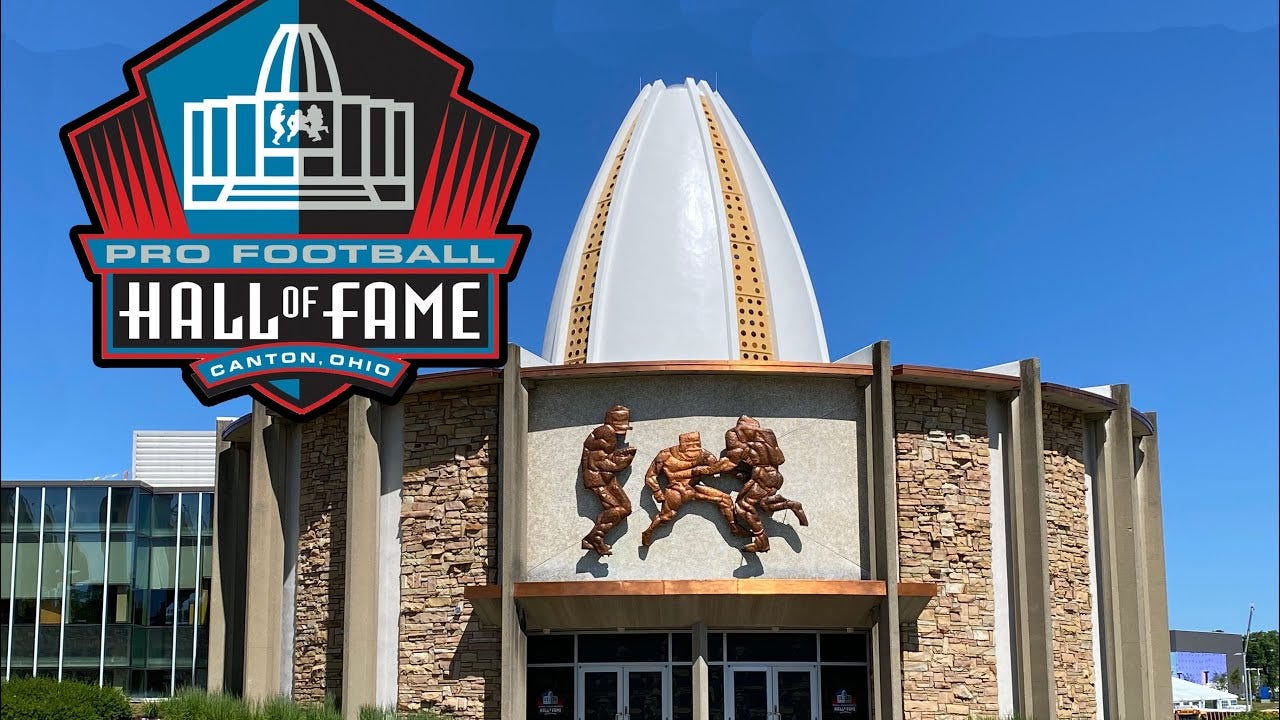

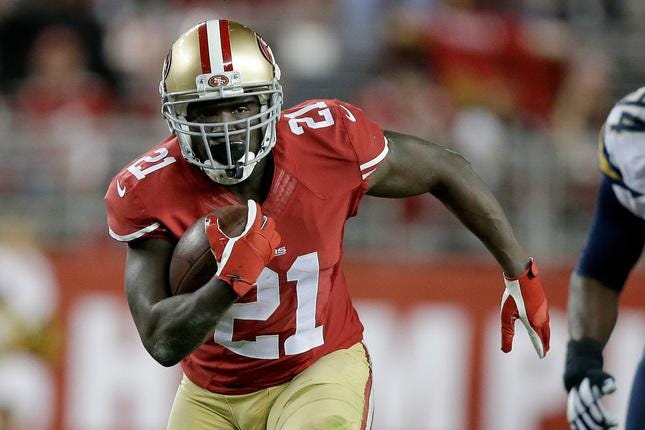
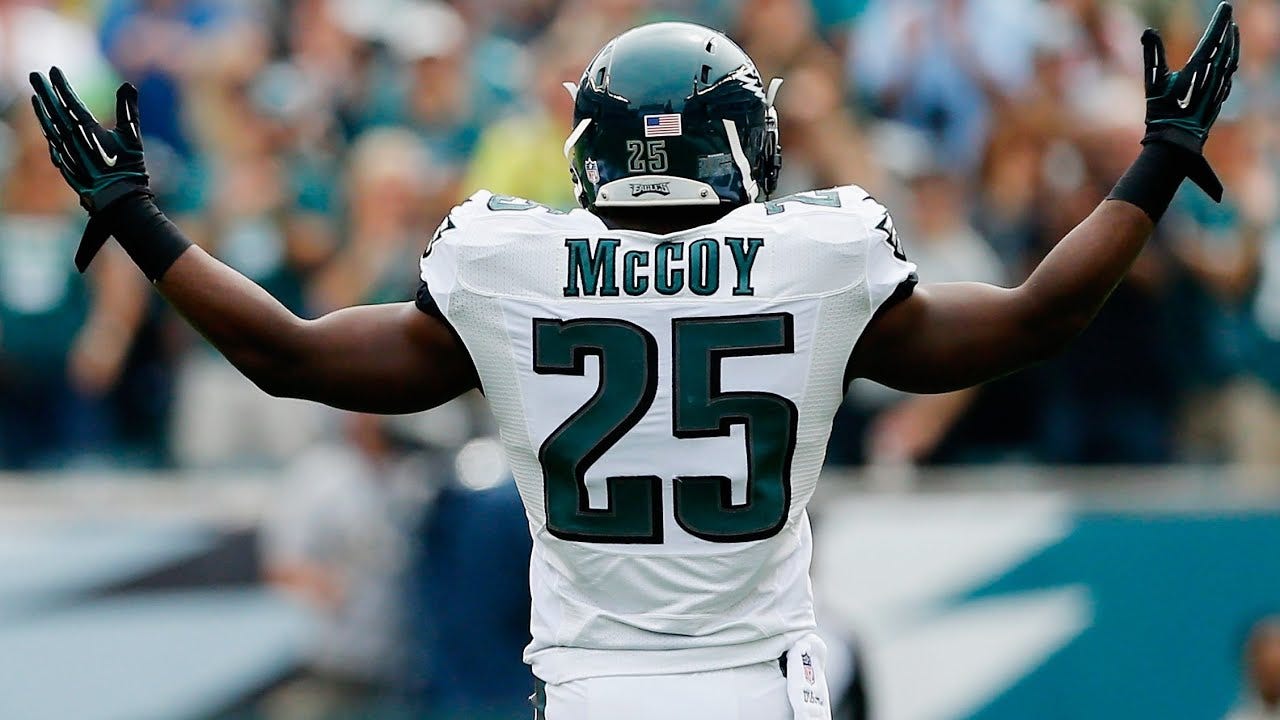
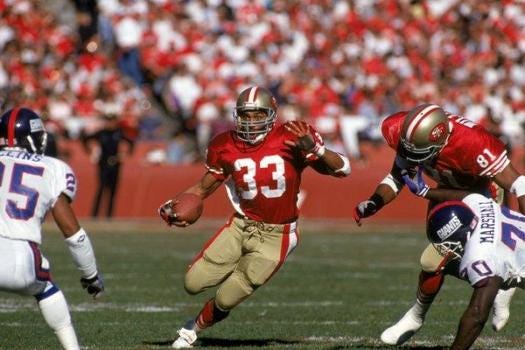
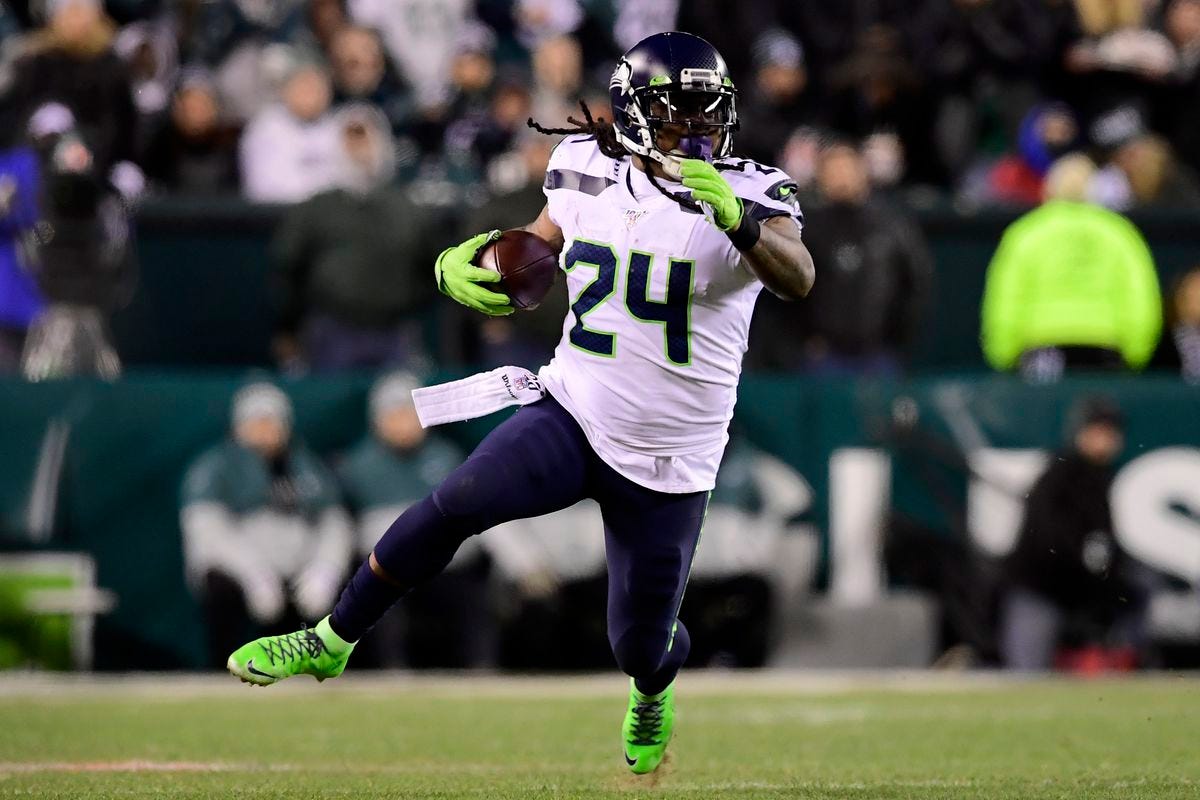



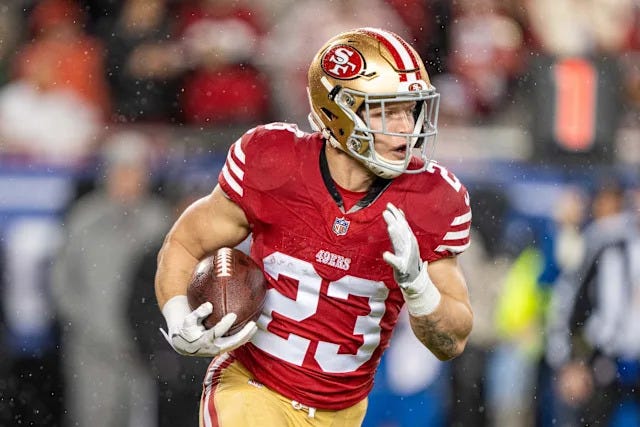

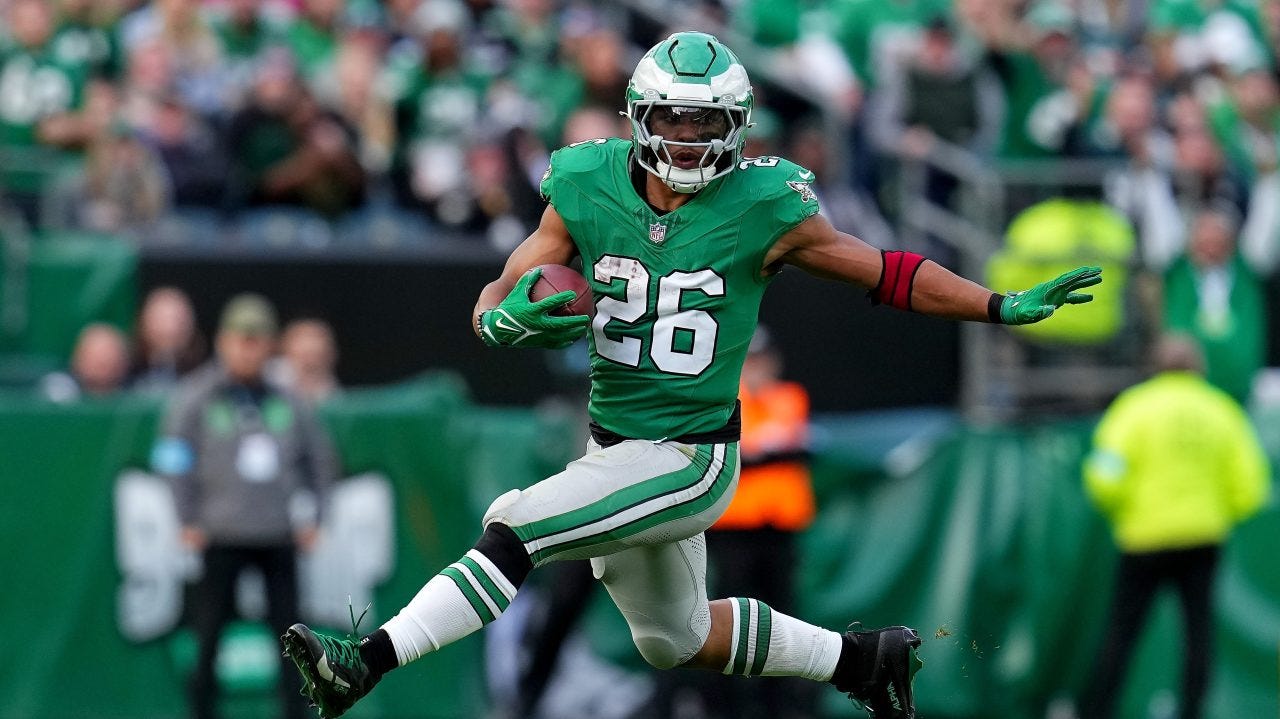

Two observations:
1, Ricky Watters would like a word - probably more accomplished than Roger Craig, but a career split among three teams may have also split his support vs. That of someone who played primarily for one team.
2, If fullbacks like Lorenzo Neal are being considered, unlikely only because of the current PFHOF logistics and backlog, then interior offensive lineman like Tom Nalen need to be considered more strongly. In his 12 NFL seasons: he blocked for a 1000-yard rusher in all but one season (that year, two 7+ game starters, withTD injury last year of career, combined for ~1400 yards). 2x SB champ, 3x 1st Team All Pro, 5 elected Pro Bowls, etc.